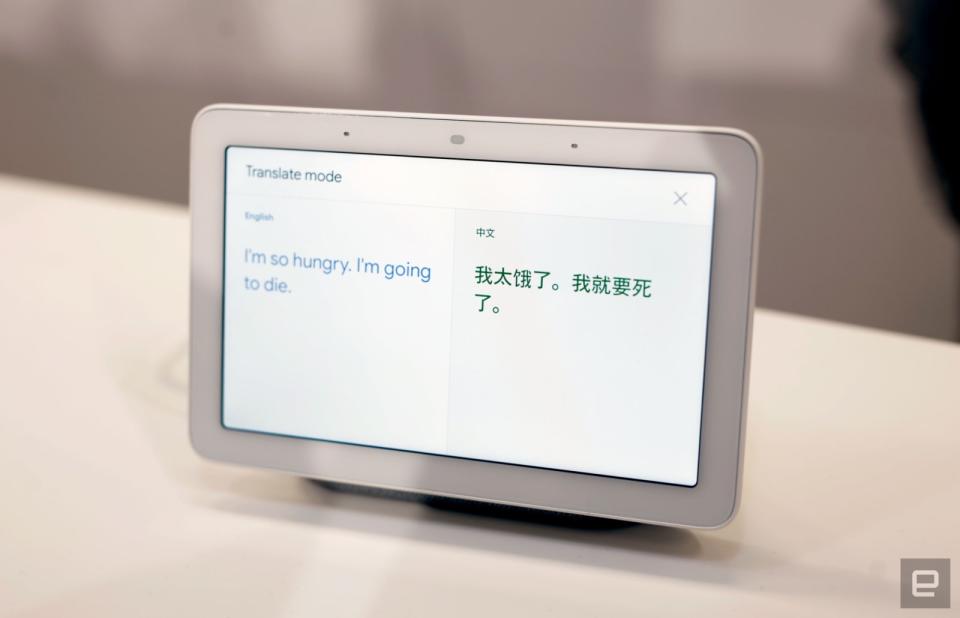Google Assistant in a smart display offers helpful live interpretation
It's still a little stilted and slow, though.
Google is taking its translation prowess a step further with a new Interpreter Mode for the Assistant in smart displays. Instead of having to whip out your phone, installing an app or opening a browser, using Interpreter Mode on Google Smart Displays is easier since you start it with a simple "Hey Google, German interpreter" command. Anyone with a Home Hub or Lenovo Smart Display can ask Assistant to be an interpreter in one of 27 supported languages (more will be added over time) in the next few weeks. But Google sees this as a bigger play in hotels. It's launching a pilot test this week at the concierge in Caesars Palace in Las Vegas, the Hyatt in San Francisco and the Dream Downtown hotels in New York City. We checked it out at Caesars Palace, and perhaps it was my own fault, but I had envisioned something a little more seamless. Instead, the whole experience still felt a little stilted -- but I'm getting ahead of myself. To use the translation services, you first have to tell Assistant what language you need. So if you mistook Mandarin for Cantonese or Japanese, for example, then you might have to guess a few times before it works. After you get Interpreter Mode running in the right language, the display splits in two to offer real-time subtitles for what both of you are saying. You don't have to take turns -- the Assistant is simply listening and will auto detect what language of the two is being spoken and translate correspondingly. But you'll still have to wait for Assistant to be done and can't overlap each other. Interpreter Mode currently works in languages including Mandarin, Japanese, Korean, French and German. I tried speaking with our friendly concierge Peter at Caesars Palace here in Las Vegas in Mandarin, asking him about free breakfasts in the hotel. Even though we were in a quiet environment, the Assistant sometimes misheard what I was saying, particularly when I spoke quickly or used colloquialisms. resulting in beautifully hilarious results like "Natural beauty is very expensive." In the real world, though, I imagine that confusion is probably frustrating rather than funny. There's also the fact that you and your conversation partner each have to wait a beat before Assistant will translate what you're saying. This is what I meant earlier about the whole process feeling a bit stilted -- there's a sort of awkward rhythm to the conversation, and Assistant as a conduit is still a little slow. It'd be more accurate to think of Interpreter Mode as a stand-in for an actual translator instead of a device that interprets in real time. With improved WiFi and processing speeds, though, I could see the system getting much more seamless. Still, as it is, Interpreter Mode on Google's smart displays is helpful especially in hotels and places where masses of international travelers gather. Small business owners who have a Home Hub or Lenovo Smart Display could also find this service useful. Our world is getting more global by the day, and it's exciting to see us get closer to the day when language barriers are eradicated with the help of technology.

